| |
|
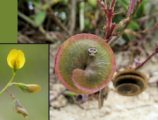 | |
| MaltaWildPlants.com by Stephen Mifsud |

|
| |
|
|
 |  |  |  |
| External Links: |
|
Elatine gussonei (Maltese Waterwort) |
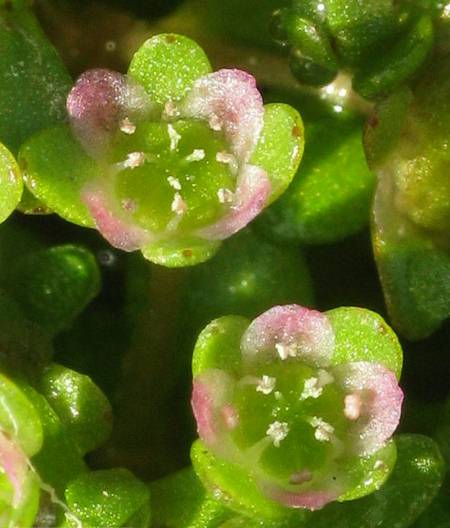
Elatine gussonei (ELATINACEAE.)
Images for this profile are taken from the Maltese Islands after year 2000. |
|
| Nomenclature |
Species name: |
Elatine gussonei (Sommier) Brullo, Lanfr., Pavone & Ronsisv. |
Author(s): |
Stefano Sommier, Italy, (1848 - 1922) ;
Salvatore Brullo, Italy, (1947 - );
Edwin Lanfranco, Malta, (1946 - );
Pietro Pavone + Giuseppe Ronsisvalle, Italy (19xx - )
|
Common names: |
Maltese Waterwort |
Maltese name: |
Elatine |
Plant Family: |
|
Name Derivation: |
Elatine = Ancient Greek name for some aquatic creeping plants. (Greek origin ); 2 = Elatine = Ancient Greek name for some low creeping plants. (Greek);.
gussonei = Named after the botanist Giovanni Gussone from Naples, Italy (1787-1866). ( ); 2 = Named after the botanist - Giovanni Gussone from Naples, Italy. (Latin). |
Synonyms: |
Elatine hydropiper var. gussonei |
Remarks: |
A sub-endemic species confined to the Maltese and Pelagian Islands.
|
|
| Morphology and structure |
PLANT STRUCTURE: |
Character | Growth Form | Branching | Surface |
Description | | | |
General
Picture |  |  |  |
|
LEAVES: |
Character | Arrangement | Attachment | Venation |
Description | | | |
General
Picture |  | 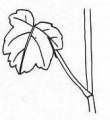 |  |
| |
Character | Leaf Shape | Leaf Margin | Remarks |
Description | | | |
General
Picture | 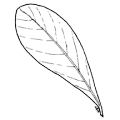 |  |  |
|
FLOWERS: |
Character | Colour | Basic Flower Type | No. of Petals | No. of Sepals |
Description | Pink to Rose | | 4 | 4 |
General
Picture | | 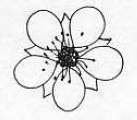 |  |  |
| |
Character | Inflorescence | Description | Ovary | Stamens |
Description | | Small, polypetalous and actinomorphic flower composed of 4 rounded (semi-circular) pinkish to pale red petals and 4 alternating green sepals usually of same size or slightly larger. | | |
General
Picture |  |  | 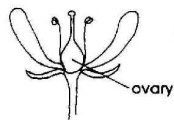 | 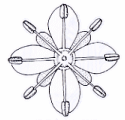 |
| |
Character | Scent | Average Flower Size | Pollen Colour | Other Notes |
Description | None | 3-5mm | Pale Yellow | - |
|
SEEDS: |
Character | No. Per Fruit | Shape | Size | Colour |
Description | <50 | Curved Comma-shaped to horseshoe-shaped. | >1mm | Dark brown to Black |
General
Picture |  |  |  |  |
|
FRUIT AND OTHER BOTANICAL DATA: |
Character | Fruit Type | Colour of Fruit | Subterranean Parts | Other Notes |
Description | | Pale Green | | Seed Coat The surface of the seeds exhibits a uniform (not elongated) hexagonal pitted texture. On contrast, Elatina macropoda have an elongated hexagon reticulation pattern. |
General
Picture |  |  | 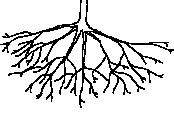 |  |
|
|
| Plant description and characters | |
Life Cycle: | Annual. |
Growth Form: | HYDROPHYTE (living only or mostly in water) |
Habitat: | Temporary Winter-Spring rain-water rock pools in garigue or steppe. |
Frequency: | Scarce |
Localities in Malta: | Some examples include Wied Hal-Saptan, Wied Dalam, Wied Znuber and Hagar Qim/Mnajdra area. Reported to be present also in Ta' Cenc, Gozo. |
Plant Height: | 3-15cm (=stem length). |
| Feb-Mar |
Protection in Malta: | Protected by law: Schedule III of [S.L. 549.44] (Conservation requires the designation of SAC) |
Red List 1989: | Threatened status for the Maltese Islands and has been listed in the Red Data Book (1st ed.) |
Poison: | |
This is a small and delicate annual that grows in rain-water pools collected in natural basins in rock of garigue or steppe. The plant has a short vegetative period, typically 3 months, since it dies off when the water dries in late spring. In around late December to January, Elatine gussonei forms small dense green mats, carpeting the base of the water-filled pools and so totally submerged in water. When the water level decreases the upper part of the growing plant is exposed to air and soon after flowering starts. Flowers are always aerial, and mostly pollinated by terrestrial insects.
The plant has small, glabrous, oblanceolate leaves with fairly long petioles (as much or slightly longer than the lamina) and entire margins. They are found in opposite directions or in pairs along the fragile stem which can turn red when the plants are mature. The lamina of the leaves rarely grow greater than 6mm in length.
The flowers develop on a distict pedicel (up to 1cm long) and either found solitary or in few-flowerd (2-3) simple cymes. The flowers are are polypetalous, actinomorphic (radially symmetrical) and hermaphrodite. The corolla is composed of 4 green sepals and 4 pink to rose petals with a rounded or semi-circular shape. The sepals are as large as the petals in young flowers and grow slightly larger when the flower becomes older. Sepals grow slightly larger in shaded plants. The flower posses 8 stamens with pale yellow anthers and 4 carpels. The ovary lies superior to the petals and have free styles.
The pale green fruit capsule is globular in shape and splits opens along its circumference when mature. Numerous, tiny (>1mm) seeds are stored inside, and are dark brown in colour and curved in shape. They simply drop in the underlying mud (or shallow water) without any particular seed dispersion.
|
|
| Information, uses and other details |
Nativity and distribution
This species of Elatine is native to the Maltese islands and only found in Malta, Gozo and Lampedusa - a small Italian island SouthWest of Sicily. Therefore Elatine gussonei is described a Pelago-Maltese sub-endemic. The distribution in Malta is mildly restricted and appears to decrease because few old records of the Maltese Starwort have not been recently recorded. In Gozo it is restricted to one area at the South.
Botanical and Taxonomical History
There are many different species of the genus Elatine that occur in Europe. In literature there has been a big confusion over the identity of different species especially due to the variability of the size of the pedicels. In our islands only one species occurs although reports of Elatine macropoda have been reported in the past. This plant was first described as a variety of Elatine hydropiper by Sommier in 1908, Lampedusa. It was called Elatine hydropiper L. var. gussonei. During the mid 20th century several varieties of E. hydropiper (E. macropoda, E. hexandra, and E. triandra) were promoted to the species rank. Similarly, in 1988, Brullo S., Lanfranco E., Pavone P., and Ronsisvalle G. raised the Maltese/Lampedusan variety to a species level, that is Elatine gussonei. [SSS]
Other members of Elatine
This species differs from many members of the genus because it has curved seeds and differs from the similar species - E. macropoda from the seed testa since E. gussonei has perfectly-shaped hexagon pits, not elongated ones as in E. macropoda. It differs from Elatine pedunculata because the pedicels are usually smaller than the size of the leaves, whilst in the pedunculata they are larger. It differs from Elatine hydropiper because this has sessile flowers. [FE]
Variations in morphology and growth cycle with environmental conditions
It seems that environment influences to a certain degree some morphological features of Elatine gussonei. For instance, shaded plants often produce pale pink petals and stems remains green, while plants exposed to full-sun develop a darker coloration in petals (=rose colour) and the stems often turn red. [SM, SSS]
[] Also noticed that shaded plants often produce larger petals, which as per original description by Sommier, E. gussonei have sepals of same size of petals. [SSS]
The water depth also have significant influence. It effects flowering time, that is when it becomes shallow enough, the plant produce flowering buds. [SM, SSS}. Additionally, plants in deeper waters are longer, become more stretched, with longer distances between neighbouring leaves and slightly longer petioles and flower stalks (pedicels). [SSS]
Life cycle of Elatine gussonei
The seeds of this plant germinate after being continously soaked in water for a long duration. This signals the plant that considerable rain has been poured and so, the natural habitat of this plant - a rain-water filled rock pool with little soil at the bottom - has been formed. Germination is clocked with considerable amount of rainfall, and this usually take place in December when the rock pools are formed. Probably, the lack of air by water flooding does also play part in the germination but this is just a personal speculation. [SM]
When the plants germinate, the leaves are initially submersed in water and gradually they grow higher. When the vertical growth of the plant combined by the decrease of water in the rockpool (by evaporation and reduced rainfall) makes the upper part of the plant reach the surface of the water and so come into contact with air, flowering buds starts to form. The time depends on how deep the pool is, and how much rainfall is produced, but usually, this takes place around mid-Feb to mid-March. In fact, the flowering peak of Elatine gussonei is often seen when the plants are in mud or in a very shallow film of water over soil deposit in the rockpool.[SM]
Eventually, by April, the water is considerably lost away and Elatine is in its fruiting and seed-dropping phase. When most of the water is lost, the plant dies, but if the life cycle was succesful, thousands od seeds per plant would have been dropped in the pool. The seeds survive the arid and hot conditions of late Spring and Summer, and waits the next rainfall at Autumn to germinate. [SM]
|
|
| Links & Further literature
(1 papers) |

Google Web |

Google Images |

Google Scholar |

Research Gate |

Wikipedia |

JSTOR |

GBIF |

Med Checklist |

Cat. of Life |

EoL |

IPNI |

World Flora Online |

Plants of the World Online |

Vienna Virt. Herb. |

RBGE Herbarium |

KEW Herbarium |

MNHN |

Arkive |

IUCN |

CABI |
 |
Chromosome number of Elatine gussonei (Sommier)Brullo (Elatinaceae) and its distribution on the Maltese islands |
Anna Kalinka1, Stephen Mifsud, Agnieszka Popiela & Magdalena Achrem (2016) |
Kindly Email if there are papers and publications about local
studies or information about this species to be included in the list above.
|
| Photo Gallery (19 Images) | 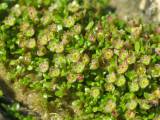 |
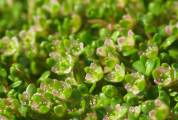 |
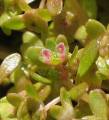 |
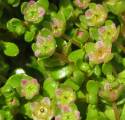 |
IMAGE: ELTGS-01 Photo of the pretty, pink to rose coloured flowers of Elatine gussonei , an endemic of the Maltese and Pelagian islands. |
IMAGE: ELTGS-02 Photo of a group of flowers with light pink petals. |
IMAGE: ELTGS-03 Close up of single, rose-coloured Elatine gussonei flower, attached to the plant by a relatively short pedicel. |
IMAGE: ELTGS-04 Close-up image of the flowers. Corolla composed of 4 free, green sepals and 4 pink, free petals. |
| |  |
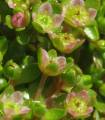 |
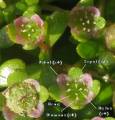 |
IMAGE: ELTGS-05 - |
IMAGE: ELTGS-06 Photo of several flowers. Note the eight stamens around the ovary. |
IMAGE: ELTGS-07 Another photo of the flowers showing one from its lateral side. |
IMAGE: ELTGS-08 Annotated image of the polypetalous and polysepalous flower of the Maltese Starwort. |
 |
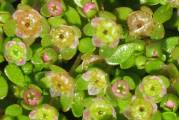 |
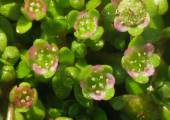 |
| IMAGE: ELTGS-09 Closeup photos of the flowers. Often the green sepals and pink petals are of same size, but mature flowers entering the fruiting phase will have slightly larger sepals. Note the 4 stigma each derived from one of the 4 carpels (pistils). |
IMAGE: ELTGS-10 Photo of a group of flowers at various maturities and fruits. A mature fruit is seen at the top right corner where the petals drop but the sepals persists and keep growing slightly. |
IMAGE: ELTGS-11 Close up image of the small flowers (6-8mm accross) of Elatine gussonei . On examining the flowers closely, one can enjoy the beauty f yjiolam. |
IMAGE: ELTGS-12 - |
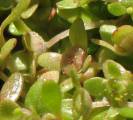 |
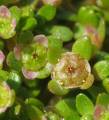 |
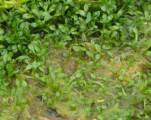 |
| IMAGE: ELTGS-13 Photo of fruit capsule. The fruit of Elatine gussonei is a circumcissile dehiscent capsule. |
IMAGE: ELTGS-14 Photo of 2 fruit capsules. Initially the fruit (=ovary) is green but reddens when reaching full maturation. |
IMAGE: ELTGS-15 Photo of young plants with dark green oblanceolate, petiolated leaves. They have a small lamina (6mm) which is glabrous and with an entire margin. |
IMAGE: ELTGS-16 - |
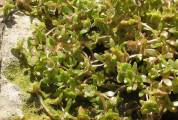 |
 |
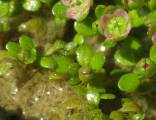 |
| IMAGE: ELTGS-17 Photo of a population of Elatine. It is normal that they are found in dense populations as shown in the photo. |
IMAGE: ELTGS-18 Photo of plants with reddish stems and opposite small leaves. Plants not exposed to full sun, will usually havea green stem. |
IMAGE: ELTGS-19 Photo of small mature Elatine plants in a very shallow rockpool taken in January. Being a shallow rockpool, the plants came into contact with air early in the year and so they flowered early and remaind small. In deeper rockpools, the plant grows larger and flowers around beg. of March. |
IMAGE: ELTGS-20 - |
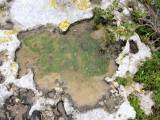 |
 |
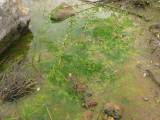 |
| IMAGE: ELTGS-21 Habitat of Elatine gussonei . A rain-water filled pool in rock pits and basins. These young plants are totally submerged in water. |
IMAGE: ELTGS-22 When the water of the rockppol decreases, the exposed plants flowers, irrispective of the time of the year or temperature. For instance this flowering population was found in January. However under normal conditions, flowering takes place in late Feb to March in Malta. |
IMAGE: ELTGS-23 A rockpool with a dense population of young Elatine gussonei taken in January. |
IMAGE: ELTGS-24 |
|
| | |

